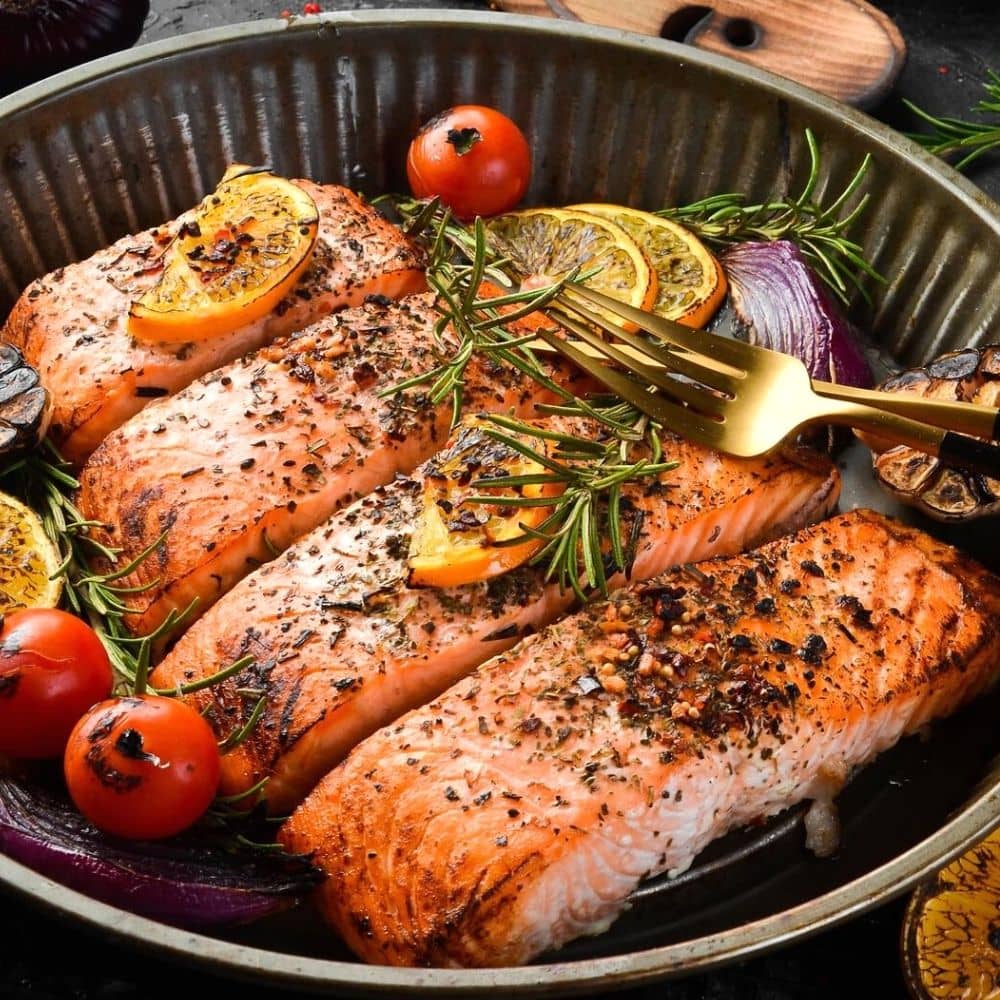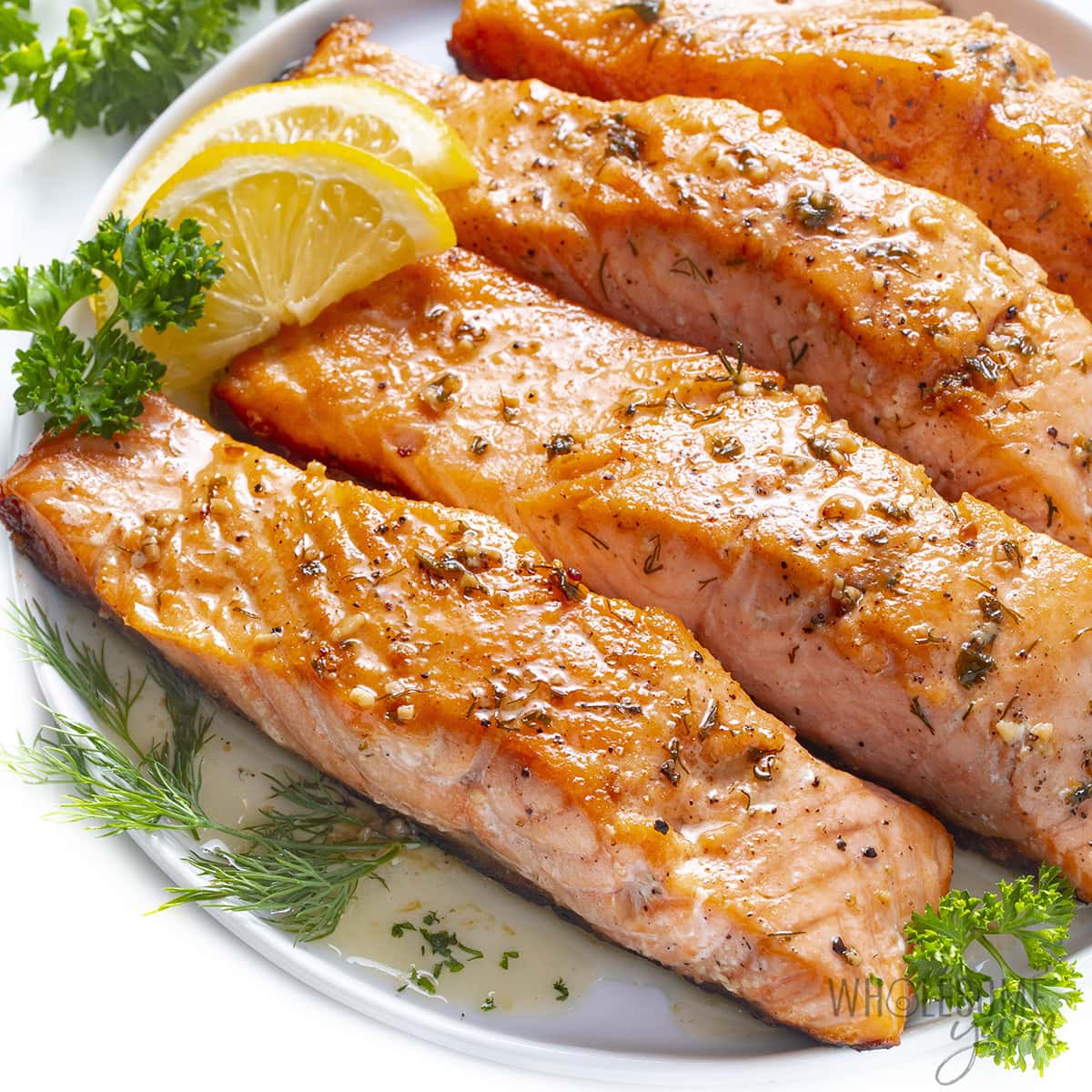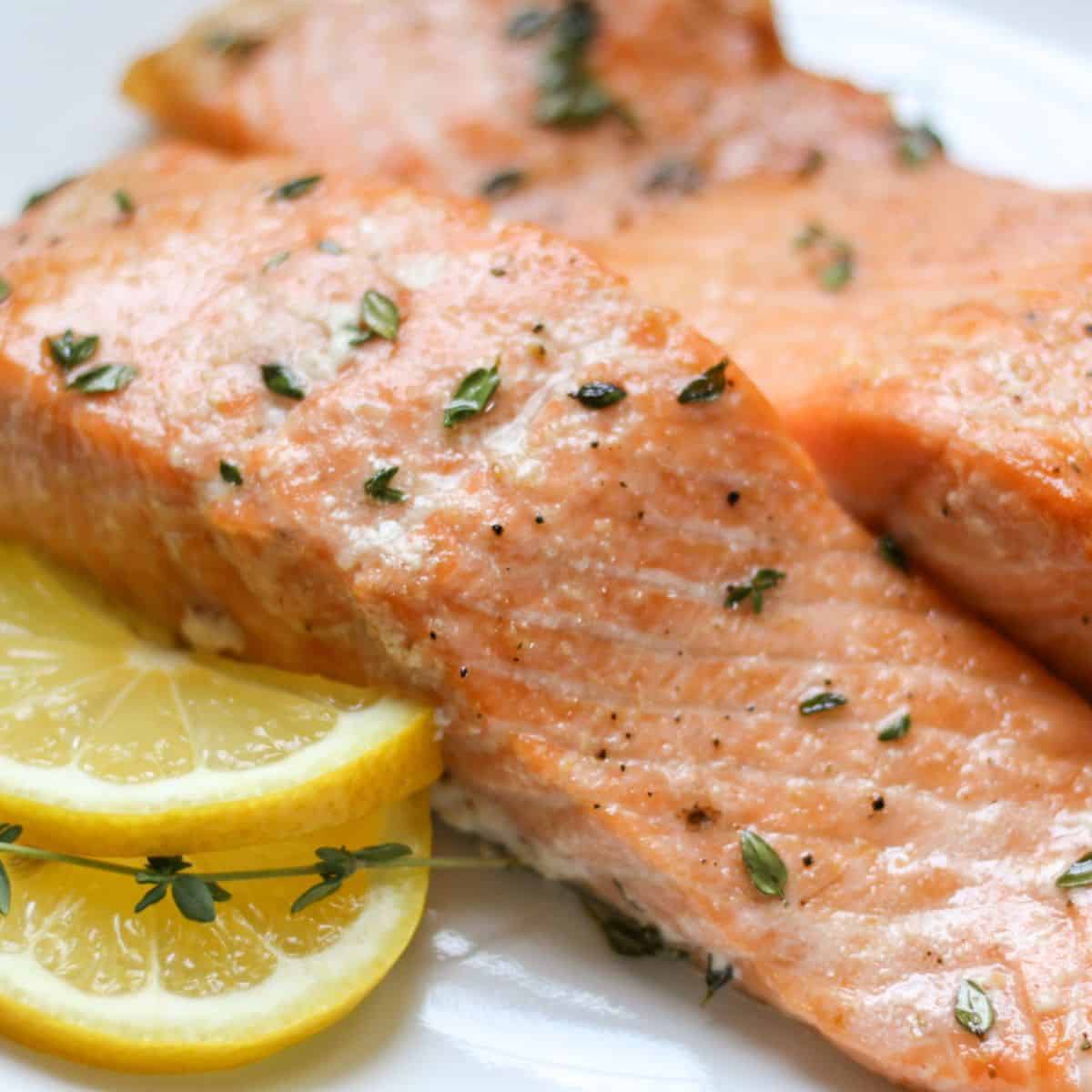Identifying Fresh vs. Spoiled Salmon
Knowing how long is cooked salmon good for in the refrigerator is key to food safety. Let’s explore the visual, olfactory, and textural cues that indicate salmon’s quality. These signs help us avoid foodborne illness and ensure we enjoy the best taste.
Visual and Olfactory Cues
First, look at the salmon. Fresh salmon has bright, even coloring and a moist surface. If you see dullness, discoloration, or dry spots, be cautious. Spoiled salmon often looks faded or has white, filmy patches.
Next, smell the salmon. Fresh cooked salmon should smell mild and clean, a bit like the sea. A strong, off-putting odor suggests the salmon is no longer good. Trust your nose; if the salmon smells sour or ammonia-like, it’s time to throw it away.
Texture Assessment
Touch the salmon to assess its texture. Fresh cooked salmon feels firm and flakes easily. If the salmon feels slimy or unusually soft, the risk of it being spoiled is high. Do not eat salmon with these texture changes. Instead, follow safe practices to discard such food promptly.
In summary, fresh salmon will look vibrant, smell fresh, and feel firm. If the salmon fails these checks, do not eat it. Always watch for these cues and store salmon properly in the refrigerator.
Optimal Storage Conditions for Cooked Salmon
Proper storage is essential to keep cooked salmon fresh.
Temperature Guidelines
Store cooked salmon at or below 40°F (4°C). Use a fridge thermometer to check.
Container Recommendations
Use airtight containers to store salmon. Wrap it tightly with foil or plastic wrap.
Maximizing the Freshness of Cooked Salmon
To keep cooked salmon fresh, follow these tips.
Proper Cooling Methods
First, let salmon cool to room temperature. Don’t leave out more than two hours to avoid bacteria. Then, put it in the fridge.
Airtight Wrapping Techniques
Wrap salmon tightly with plastic wrap or foil. Use an airtight container for best results. This keeps salmon fresh longer.
Shelf Life of Cooked Salmon in the Fridge
Proper refrigeration is critical to extending the life of cooked salmon. Keeping track of how long your fish has been stored can prevent foodborne illness and also ensure that you’re enjoying your salmon when it’s at its best. Here’s what to keep in mind:
USDA Guidelines
The United States Department of Agriculture (USDA) recommends eating cooked salmon within three to four days of cooking. After this period, even well-stored salmon can become unsafe to eat and start to spoil.
Best Practices for Consumption Window
To maximize the quality and safety of your cooked salmon, eat it within the recommended time. Ideally, have a use or recipe in mind for leftovers to avoid wasting them.
- Use airtight containers to store cooked salmon.
- Ensure your refrigerator temperature is below 40°F (4°C).
- Limit the salmon’s exposure to air by sealing it well.
- Label and date the salmon when you place it in the fridge.
- Plan to use leftovers in creative ways to prevent waste.
Remember, if the salmon looks or smells off, or has a strange texture, it’s best to throw it out.
Freezing and Thawing Cooked Salmon
Storing cooked salmon in the freezer can keep it safe longer. Here are tips.
Methods for Freezing Salmon
To freeze cooked salmon, let it cool first. Wrap it well to avoid freezer burn. Use heavy-duty foil, cling wrap, or a freezer bag. Remove as much air as possible to keep it fresh. Label the salmon with the date. Cooked salmon can stay good in the freezer for six months.
Safe Thawing Practices
When ready to eat, thaw your salmon correctly. Place the frozen salmon in the fridge. Let it thaw overnight. Do not thaw salmon at room temperature. It can cause bacteria to grow. Thawed salmon should be eaten within a day or two for the best taste. If you must thaw quickly, use the microwave on a low setting. Cook it right after microwaving.
Creative Recipes for Leftover Salmon
Leftover salmon doesn’t need to be a repeat of yesterday’s meal. Here are creative ways to enjoy it.
Reinventing Salmon Meals
Transform your salmon into a different dish. Mix flaked salmon into pasta or make salmon patties. Create a salmon salad topping or mix into scrambled eggs. Try salmon in a wrap with fresh veggies.
Quick and Easy Leftover Salmon Ideas
Use salmon leftovers for simple meals. Add chunks of salmon to a green salad. Make a salmon sandwich spread by mixing with mayo and herbs. Toss flaked salmon into hot cooked rice. Layer salmon in a bagel with cream cheese and capers.
Food Safety and Handling Tips
Proper food safety and handling are critical to enjoying cooked salmon safely. Ensuring safe preparation and storage will help maintain quality and prevent foodborne illness.
Preventing Cross-Contamination
To prevent cross-contamination, always use separate equipment for raw and cooked foods. Keep raw salmon away from other foods in the fridge. Before and after handling salmon, wash hands well. Clean all surfaces and utensils with hot soapy water after use.
Knowing When to Discard Leftovers
Observe leftovers carefully for spoilage signs. Watch for changes in color, smell, or texture. If salmon has been in the fridge over four days, discard it. Don’t taste salmon to determine if it’s good. Trust your senses. If in doubt, throw it out. This prevents the risk of foodborne diseases. Keep cooked salmon’s shelf life in mind to enjoy it safely.
 Frequently Asked Questions
Frequently Asked Questions
Navigating leftovers can be tricky, so let’s address common queries about leftover salmon.
Handling Common Concerns
Q: How do I know if my cooked salmon is still safe to eat?
A: Check its color, smell, and texture. If it looks dull, smells off, or feels slimy, discard it.
Q: Can I eat cooked salmon after four days in the fridge?
A: It’s best to eat it within three to four days. After that, it might not be safe.
Q: What happens if I eat spoiled salmon?
A: You could get sick. Spoiled salmon can cause foodborne illnesses.
Extending Shelf Life and Quality
Q: Will keeping my fridge colder extend my salmon’s shelf life?
A: Yes, keeping it at or below 40°F may help, but always check salmon before eating.
Q: Can I freeze cooked salmon?
A: Yes, wrap it well and freeze. Eat within six months for best quality.
Q: How can I revive dried-out refrigerated salmon?
A: Add a little moisture, like a splash of water, when reheating to add some tenderness back.
Q: What’s the best method to freeze salmon?
A: Use airtight containers or freezer bags. Remove air to prevent freezer burn.
Remember, when in doubt, toss the salmon out. It’s better to be safe than sorry.
Final Thoughts: how long is cooked salmon good for in the refrigerator
So, how long is cooked salmon good for in the refrigerator? Generally, cooked salmon should be consumed within 3 to 4 days provided it has been stored properly. Adhering to food safety precautions, using proper storage techniques, and recognizing signs of spoilage will not only help ensure your health but also enhance your culinary experience.
Salmon is a versatile and nutritious food that can be enjoyed in many forms, and with the right care, you can savor its flavors for several days after cooking. Embrace both the deliciousness and the safety of your meals, making cooked salmon a delightful part of your diet.


